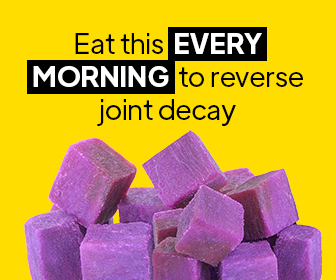When I first entered perimenopause, I noticed subtle changes in my body that I couldn’t explain at first—aching joints, slower recovery after exercise, and a nagging fear about bone health. My doctor explained that declining estrogen levels during menopause increase the risk of osteoporosis, joint stiffness, and muscle loss. That conversation became a turning point for me: I realized that exercise wasn’t just about staying fit anymore—it was about protecting my future health.
If you’re going through menopause (or preparing for it), you might feel the same way. The good news is that the right workout plan can help strengthen your bones and joints, boost energy, and even stabilize mood swings. In this blog, I’ll share what I’ve learned personally and professionally about creating a menopause-friendly workout plan, and how you can make it work at any age.
Why Exercise Matters So Much During Menopause
Menopause brings hormonal shifts that directly affect your musculoskeletal system:
- Bone Loss: Estrogen protects bone density. When levels drop, bones can weaken faster, leading to osteoporosis.
- Joint Pain & Stiffness: Many women experience inflammation and reduced flexibility.
- Muscle Decline: Age-related muscle loss (sarcopenia) accelerates, affecting strength and balance.
- Weight Gain: Metabolism slows, making it harder to maintain a healthy weight.
Exercise isn’t just a nice-to-have—it’s essential. It helps maintain bone density, keeps joints mobile, reduces the risk of falls, and improves overall quality of life. I found that once I started prioritizing strength training and low-impact cardio, my body felt less fragile and much more resilient.
The Best Types of Exercise for Menopause
1. Strength Training for Bones and Muscles
Strength training is the foundation of a menopause workout plan. Lifting weights or using resistance bands places stress on bones, which encourages them to rebuild stronger. It also helps retain lean muscle mass, which boosts metabolism.
- What I do: I started with 2–3 sessions a week of full-body strength training, focusing on squats, lunges, push-ups, and resistance band rows.
- Tip: You don’t have to lift heavy right away—bodyweight exercises count. Progress gradually to avoid injury.
2. Weight-Bearing Cardio for Bone Density
Cardio that involves supporting your own weight helps stimulate bone strength. Walking, dancing, hiking, or light jogging are excellent options.
- My experience: I swapped out high-impact running (which hurt my knees) for brisk walking and hiking. It’s easier on the joints while still improving heart health and bone density.
3. Low-Impact Cardio for Joint Health
Swimming, cycling, or using the elliptical are fantastic for heart health without straining joints.
- Personal tip: On days when my hips feel sore, I hop on my stationary bike for 20–30 minutes instead of forcing myself to do a high-impact workout.
4. Flexibility and Mobility Training
Stretching, yoga, or Pilates can keep your joints flexible and reduce stiffness.
- My practice: I do a 10-minute morning yoga flow focused on hip openers and spinal stretches. It’s made a huge difference in how I feel during the day.
5. Balance and Core Work
Menopause increases fall risk due to changes in bone strength and balance. Exercises like single-leg stands, planks, or using a stability ball can help.
- Personal win: After consistently practicing balance exercises, I noticed fewer ankle tweaks when walking on uneven surfaces.
A Sample Menopause Workout Plan
Here’s a beginner-friendly weekly routine you can adapt to your own schedule:
Day 1: Strength training (squats, lunges, push-ups, resistance band rows, planks)
Day 2: Brisk walking or hiking (30–40 minutes)
Day 3: Yoga or Pilates (20–30 minutes)
Day 4: Strength training (upper body focus: bicep curls, tricep dips, shoulder presses)
Day 5: Low-impact cardio (cycling, swimming, or elliptical 30 minutes)
Day 6: Balance & mobility (single-leg stands, gentle stretches, foam rolling)
Day 7: Rest or light activity (gentle walk, stretching, gardening)
Nutrition and Recovery: The Other Half of the Plan
A workout plan won’t protect your bones and joints without proper recovery and nutrition:
- Calcium & Vitamin D: Essential for bone health. I added more leafy greens, salmon, and fortified almond milk into my diet.
- Protein: Supports muscle recovery and growth. Aim for protein with each meal.
- Hydration: Dehydration can worsen joint stiffness. I now keep a water bottle on my desk at all times.
- Rest & Sleep: Recovery is critical, especially since menopause can disrupt sleep patterns. Yoga nidra and magnesium supplements helped me fall asleep faster.
My Biggest Lessons from Exercising Through Menopause
- Consistency matters more than intensity. Even 20 minutes a day adds up.
- Listen to your body. Some days you’ll need to modify exercises—don’t push through pain.
- Strength training is non-negotiable. It’s the single best thing I’ve done for my body.
- Community helps. I joined a small fitness group for women over 40. The support kept me motivated.
- Celebrate small wins. When I could carry groceries without back pain, I knew I was on the right track.
Final Thoughts: You’re Never Too Old to Start
The menopause transition can feel daunting, but it’s also a powerful opportunity to invest in your long-term health. A well-rounded workout plan not only strengthens your bones and joints but also boosts confidence, energy, and mental well-being.
I often remind myself: exercise during menopause isn’t about chasing a perfect body—it’s about building strength for the next chapter of life. Whether you’re 45, 55, or 65, your bones and joints will thank you for every step, stretch, and squat.
So if you’ve been waiting for the “right time” to start, this is it. Lace up your shoes, pick up those weights, and give your future self the gift of strength.




